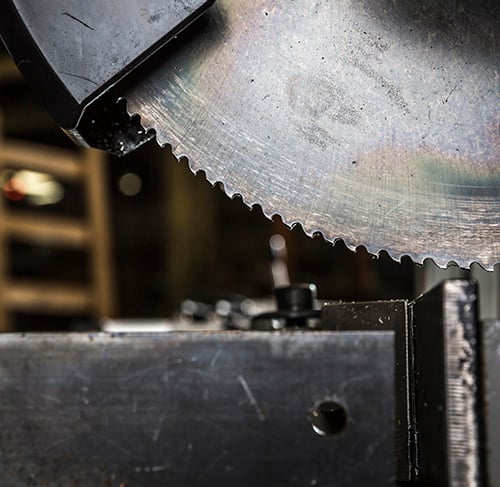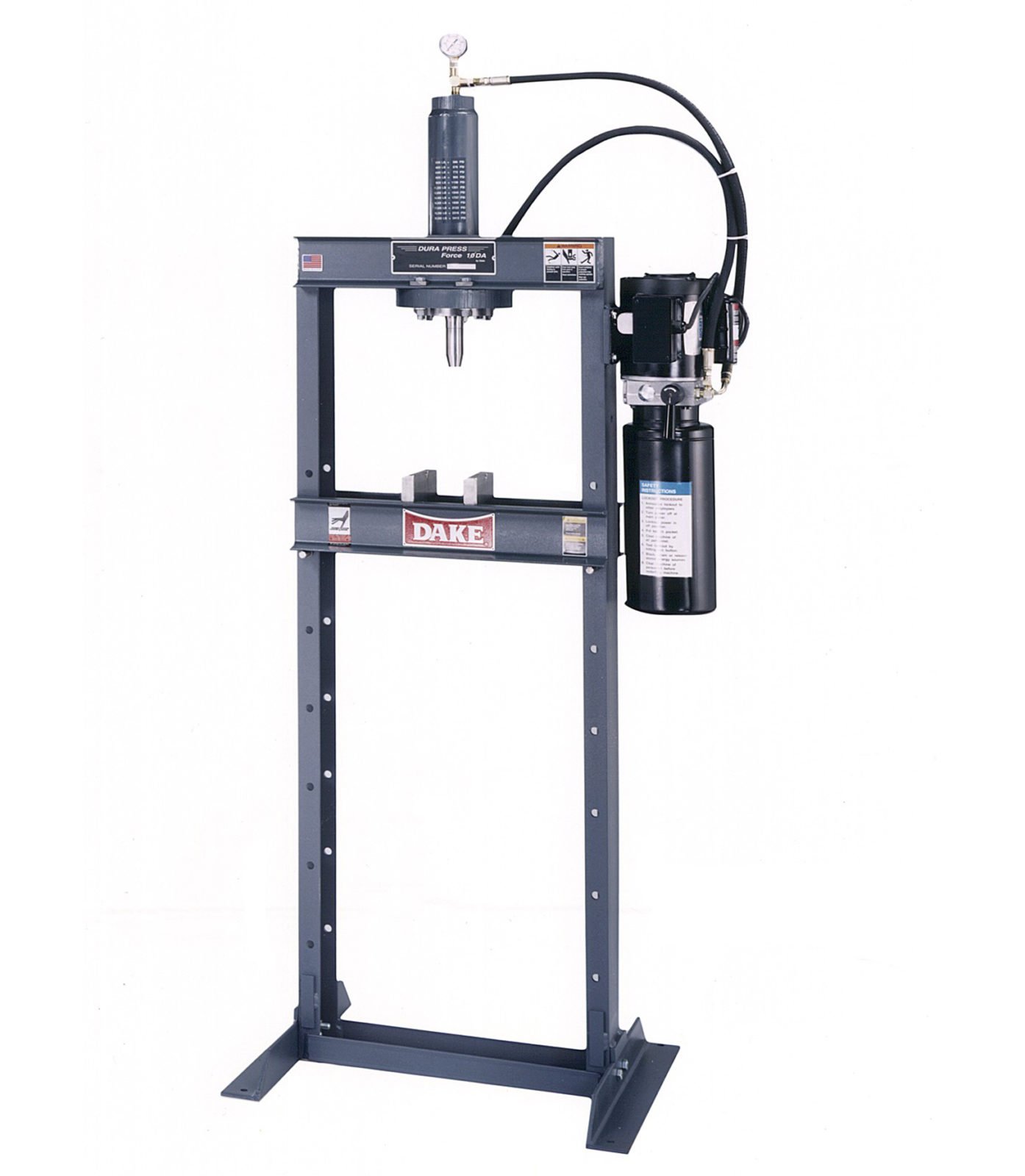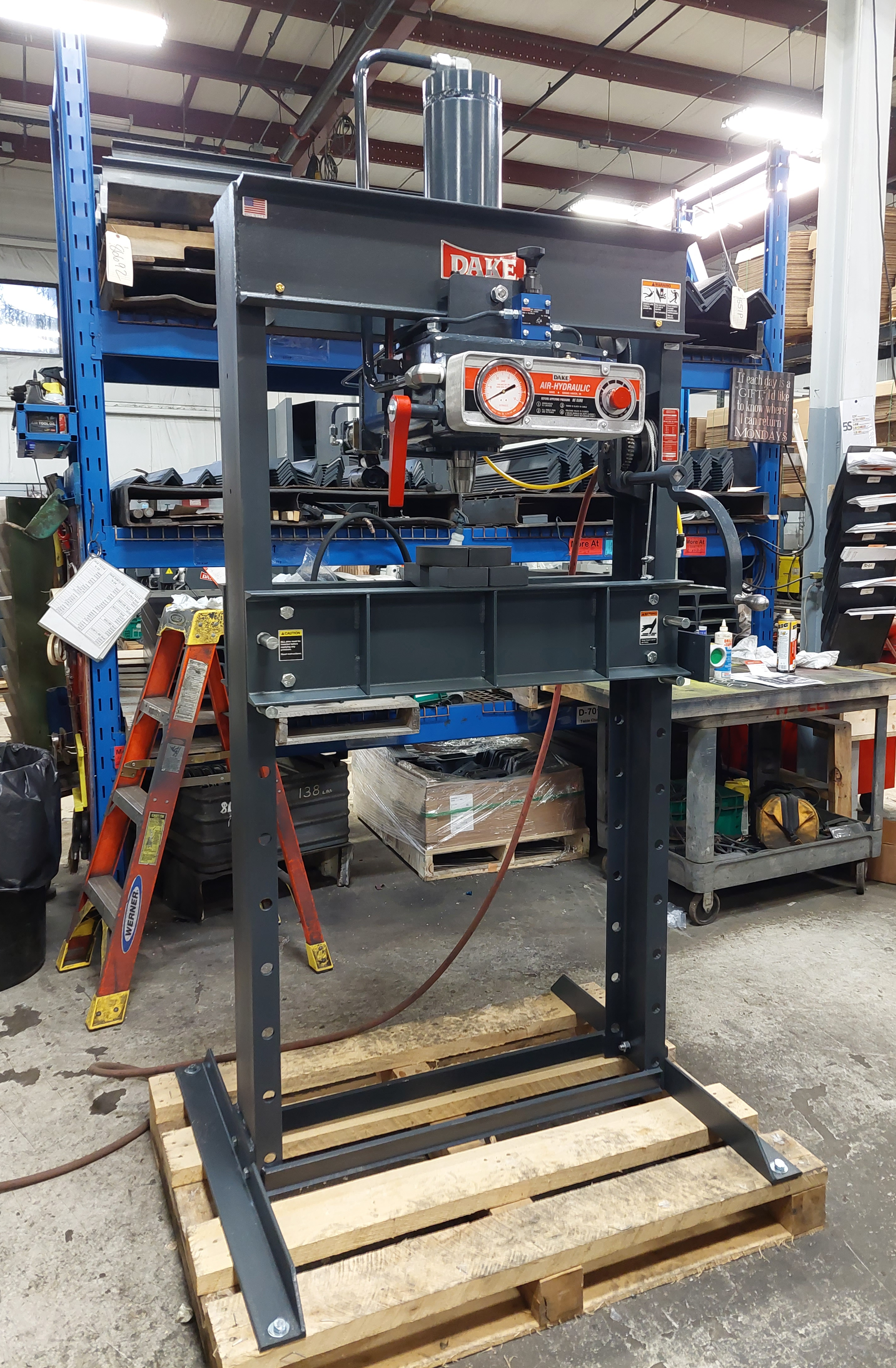There are many types of saw blades available for your metalworking cold saw or band saw depending on the use of the saw.
Not only that, there are many new types of saws being introduced all of the time. This can cause a lot of confusion when trying to determine the best saw blade for your application.
That is where we come in!
We have put together a list of 5 of the most common saw blade types for metalworking and their advantages so you never have to second guess your decision again.
1. Carbon Hard Back
One-piece carbon steel construction; spring tempered backing with an RC of 43 – 47 (for rigidity) and a tooth RC of 64 –6.
Advantages of a Carbon Hard Back Blade:
- Low cost
- Resists swagging
- Resists scoring
- Accepts heavier feed pressures
- Results in faster cut rates

2. Carbon Flex Back
One-piece carbon steel construction; spring tempered backing with an RC of 31 – 37 to allow flexing and a tooth RC of 64 – 66.
Advantages of a Carbon Flex Back Blade:
- Low cost
- Greater fatigue life
- Blade back will flex to minimize back fatigue and fractures
- Reduction in blade hardness occurs at about 300º F
3. Bi-Metal (Matrix)
A blade made from two dissimilar metals; steel spring backing with high-speed steel edge material welded to tips of the teeth. The high-speed steel often contains 8% cobalt for extreme wear characteristics.
Advantages of a Bi-Metal (Matrix) Blade:
- Fatigue resistance
- Resists back edge swaging
- Operates at high band tension for straighter cuts versus carbon steel blades
- Reduction in blade hardness occurs at about 1300º F

4. Carbide Tipped
Welded carbide to the tips of each tooth and welded to a high strength alloy backing. Ground for triple chip - every other tooth has a double bevel rather than a straight tooth.
Advantages of a Carbide Tipped Blade:
- Cutting harder materials
- Best finish on non-ferrous applications
- Greater strength
- Heat resistance
- Eliminates tooth set collapse that will cause binding

5. Grit Edge
Tough alloy backing material with tungsten carbide or diamond grit fused to the edge of blade. These blades can have either straight edges or gulleted edges for gummy materials.
Advantages of a Grit Edge Blade:
- Cutting abrasive or very tough material
- Run at higher blade speeds

-1.jpg?width=1200&height=525&name=DAKE003_%20Logos_Red%20(002)-1.jpg)

.jpg)


